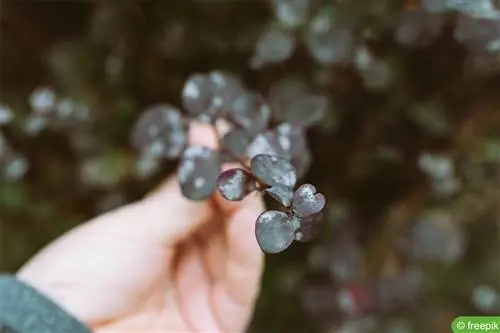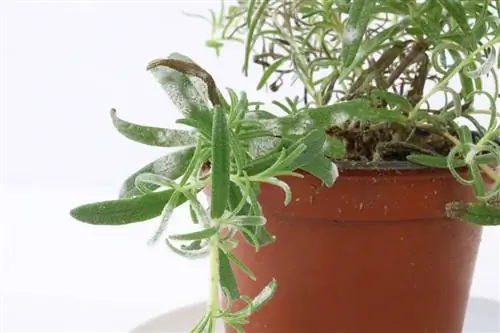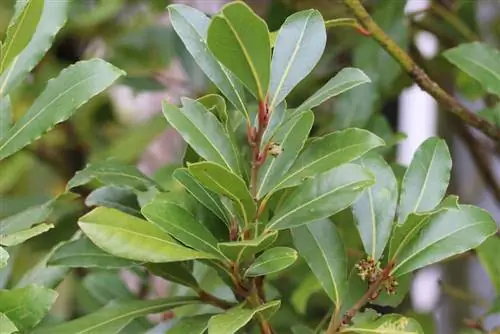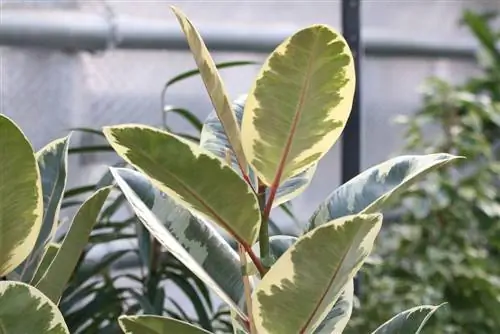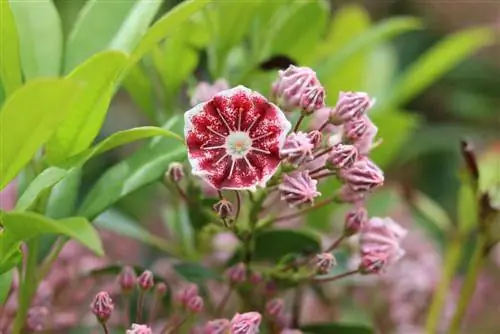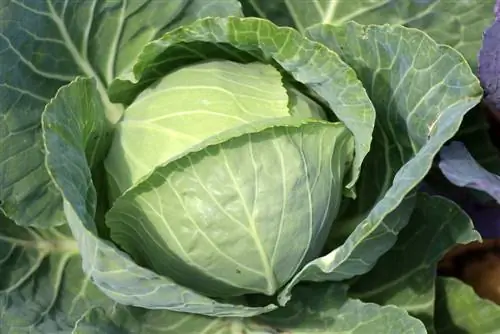- Author admin [email protected].
- Public 2023-12-17 03:39.
- Last modified 2025-01-24 12:45.
When white dots appear on the leaves of cultivated plants, you should take a closer look because they can indicate problems. What causes can be responsible for this and what you can do about the stains can be found in this text.
Fix nutrient deficiencies
A nutrient deficiency or an imbalance between necessary nutrients can result in spots or spots on leaves. However, the problem worsens over time and it doesn't just remain as small white dots. If the leaves become lighter overall and the plant growth remains stunted, it is necessary to fertilize the plant. Choose a suitable fertilizer depending on the type of plant and apply it according to the instructions on the packaging. Over-fertilizing can also harm the plant.
Note:
The lack of individual nutrients or minerals can also lead to white spots, but it is very difficult to find out exactly which substance the plant is missing.
Watering correctly
If the irrigation water contains lime and the plants are watered from above, white deposits may remain on the leaves when they dry. However, these are then harmless limescale stains. Depending on how coarse the leaves are, it is sufficient to wipe them with a damp cloth. To avoid this type of stain, always water the plants from below, directly at the root ball.
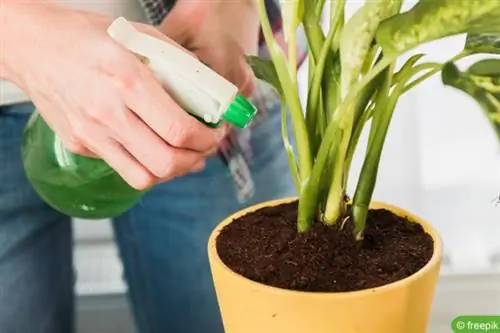
Note:
When spraying the plants, only use low-lime water, preferably rainwater.
Fighting diseases
Powdery mildew (Erysiphaceae)
Powdery mildew occurs on various vegetables. Characteristic are the white spots on the leaves, which are initially small and dot-like and later become larger and larger. The fungal disease can cause plants to die.
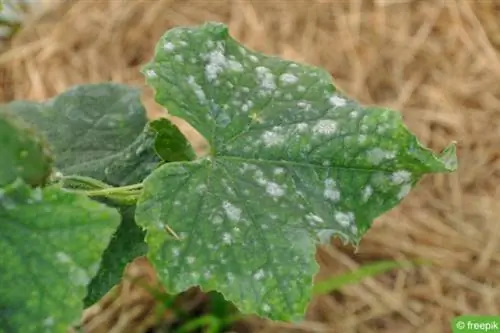
- Take countermeasures immediately at the first occurrence
- occurs mainly in dry weather and good nitrogen supply
- remove affected plant parts and dispose of them in the trash
- do not compost, fungal spores could survive
- possibly use sprays
- When choosing plants, prefer resistant varieties
White spot disease (Mycosphaerella fragariae)
White spot disease is also a fungal disease. The characteristics are white dots on the plant leaves that have a brownish border. The spots are getting bigger and bigger. If a lot of leaves are damaged, the plant will take care of itself or die.
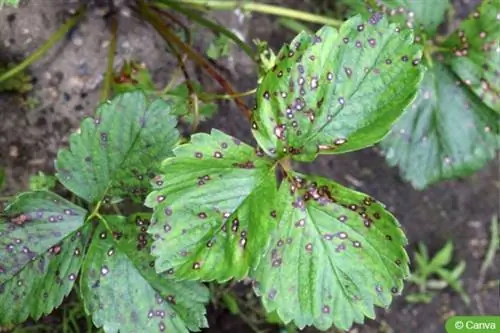
- only use fungicides in severe infestations
- remove infected plants or parts of plants
- do not compost, dispose of in the trash
- note wide plant spacing
- Plants can dry better after rain
- more common in wet weather
White rust (Albugo candida)
This fungal disease is common in cruciferous vegetables and can cause great damage, especially in commercial farming. It occurs less frequently in the garden. The fungus initially forms white, small dots on the leaves, which later converge and form spore deposits of the fungus. The spots don't last, the affected leaves change, become stunted or swell.
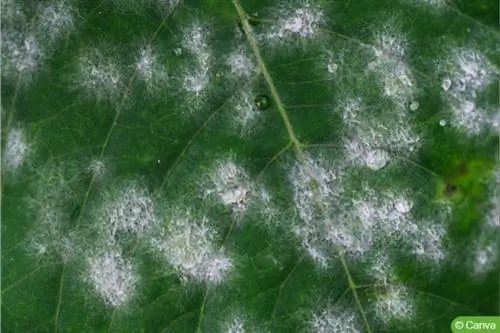
- It is best to remove affected plants completely
- otherwise at least remove affected plant parts
- Dispose of plant material in the trash, do not compost
- Spores are long-lived in soil, leaves or seeds
Identify and eliminate spider mites
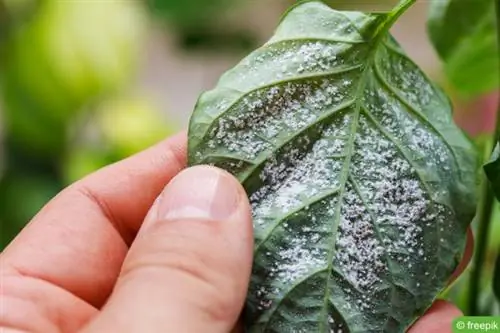
Spider mites (Tetranychus) suck on the leaves of infected plants, causing small, white dots. At some point the affected leaf dries up. If the infestation is severe, the entire plant dies. In addition to the small spots, the webs between the leaves are also noticeable; the small arachnids can be seen in them with the naked eye. Spider mites can be easily controlled with moisture. To do this, spray or rinse the plant with water every day until the plant is free of the animals.
Frequently asked questions
Should leaves with white spots be removed?
If it's pests or a disease, definitely. However, with limescale stains this is completely unnecessary. As long as the leaves only have a few spots and otherwise look he althy, it doesn't make sense to remove them.
How can spider mites be prevented?
Spider mites appear on plants when the humidity is too low. As an immediate aid, you can spray the plants with water. But it is better to put them in a room where the humidity is higher or to increase the humidity in the room.
Which plants are particularly susceptible to white spots on their leaves?
This includes some types of vegetables, such as pumpkins, strawberries or various ornamental plants, especially if they are sensitive to limescale.

